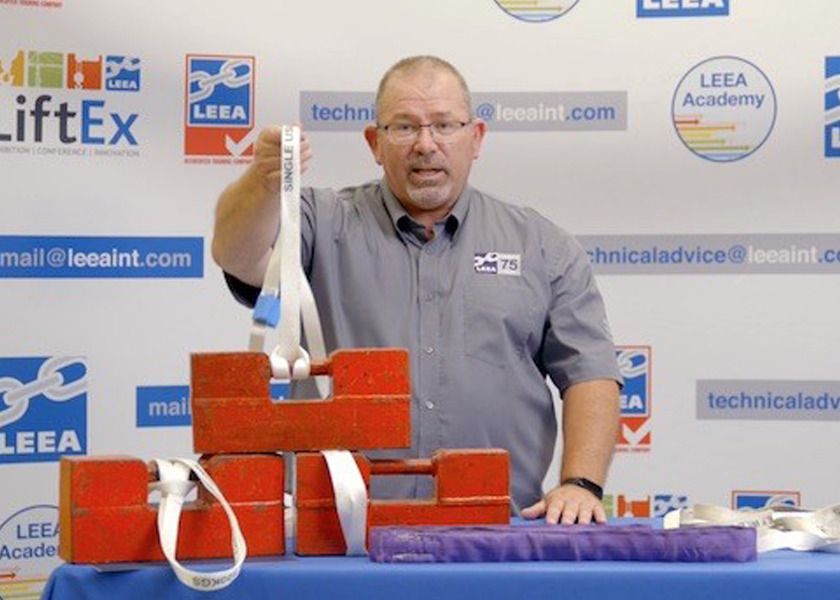
Addressing the issue of one trip slings
A general lack of understanding over ‘one trip’ and low quality slings is threatening safety, warns Bernie Winter, Technical Engineer at the Lifting Equipment Engineers Association (LEEA).
The term ‘One trip sling’ is given to a sling that has been designed for the specific purpose of attaching to and accompanying a specific load from source, through a defined number of handling operations, until it reaches its final destination. Once this trip has concluded the sling must be destroyed and not reused. Duty holders will be culpable for non-conformance.
One trip slings must only be used for a single specific task within their working load limit, which can be found on the sling itself – sometimes on the body but in all cases it will be found on the sling’s label. The final destination of the load and the sling must be known, yet the sling may be used to lift the same load only numerous times throughout its journey. On completion of its journey, the sling must be removed and discarded. It must never be reused. Ideally, LEEA will always recommend cutting the sling to ensure this happens.
Any writing on the sling it must be in the language of the user’s location or in English. One trip slings tend to be thinner than their general purpose counterparts and may come in any colour, including white. Those used in UK or EU must have the appropriate conformity mark, which can be found on the information tag. The sling must also be supplied with instructions for use, a manufacturer’s certificate or, in the UK and EU, a declaration of conformity.
Before each lift, a one trip sling must be checked to ensure it is safe to use. Even though the slings may be new, it is possible for it to have been damaged either during transit or through the method used to attach it to the load. Look out for torn tags, making the Working Load Limit unreadable as well as cuts, nicks and abrasions on the sling itself. These could possibly cause weakness and part under load.
Is the sling properly attached to the load, check that damage does not occur where it has been pre-slung and trapped between loads. If this is the case, the sling must be removed if it is safe and practical and replaced with a new one. If in any doubt, contact the supervisor first. Also, ensure that documentation is easily accessible when needed and, where possible, talk to the supervisor whenever it needs to be checked.
To be clear, one trip slings are legal and are absolutely safe to be used for their designed purpose. However their use must be controlled, those using them must be educated on the limitations of use and they must be instructed to destroy the slings to prevent re-use. Everybody down the line should have the information necessary to identify one trip slings and the knowledge of what to do with them. Without this information it is impossible to properly plan the lift as required by legislation and therefore leaves the user at risk and the duty holder culpable for failure to address the risk through proper planning of the lifting operation.
In summary: a one trip sling is not a general purpose sling – it is a single use or one trip sling only. Once it is finished with or removed from the load or if it is damaged, it must be withdrawn from service and quarantined as a minimum. Ideally it should be destroyed, preferably by cutting. If you find any slings lying around, do not feel tempted to reuse them. They too must be taken out of service and quarantined for the sake of the safety of all workers.
Issues with one trip slings are seen commonly by LEEA during audits and through its technical advice email service. Where LEEA identifies issues such as this, it will resolve it through guidance. In this instance, LEEA recently produced ‘Document Reference: LEEA-078-1 Guidance on the use of One trip textile slings’, which can be downloaded at leeaint.com.



